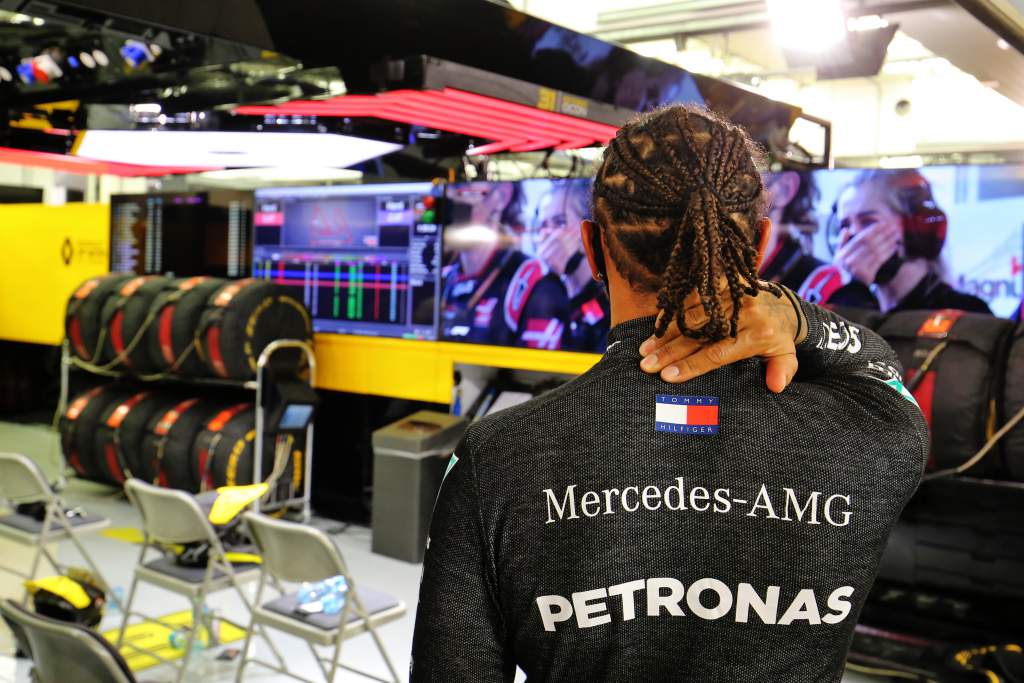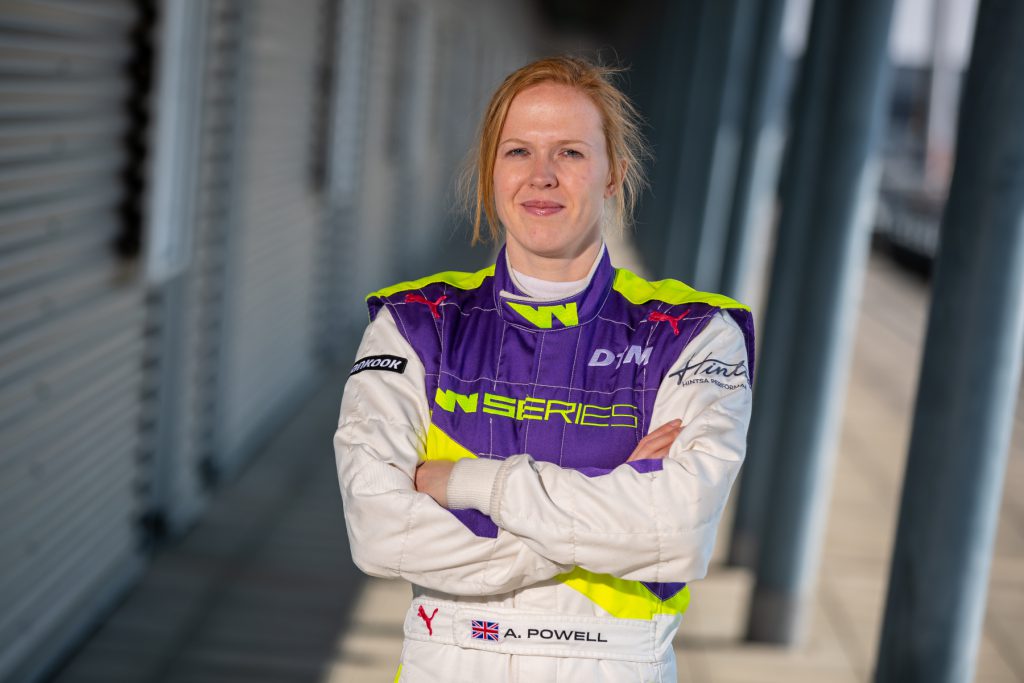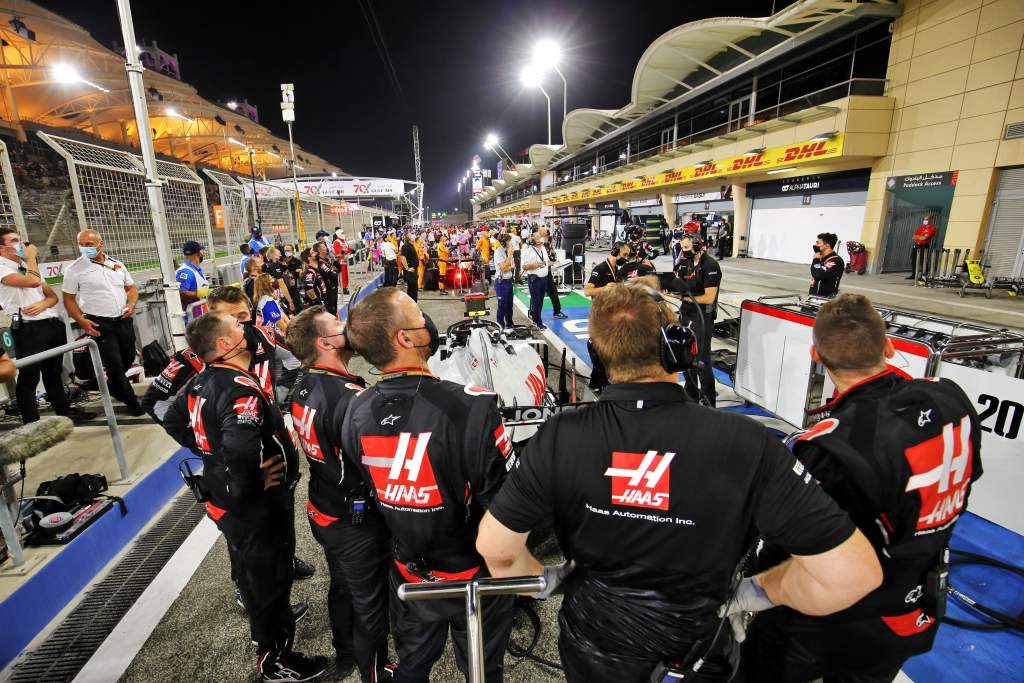Up Next

W Series drivers are writing a series of columns for The Race this year, giving their verdicts on what’s going on in Formula 1. This week, Alice Powell reflects on the Bahrain Grand Prix, and how it feels as a driver to see a fellow competitor suffer an incident like Romain Grosjean’s.
Romain Grosjean’s crash at the Bahrain Grand Prix is one of the scariest things that I have ever seen at a race circuit and I was physically shaking as I watched the drama unfold. It was like a scene from a Hollywood movie as the Haas hit the barriers, ripped in half and instantly went up like a fireball.
Your first thought is for the driver and the marshals in the proximity, and I am just so grateful that everybody emerged relatively unscathed. It is a miracle that was the case.
I have never seen anything like it, and that was why it was so shocking to me. I remember a race at Brands Hatch during my maiden Formula Renault season in 2009 when a car hit the barriers on the approach to Sheene Curve on the Grand Prix circuit. The gearbox ripped off the back third of the tub as the driver hit the tyre barriers, but it didn’t burst into flames.
Grosjean’s incident was a perfect storm. It looked to me like the Frenchman was trying to get to the right of his Haas team-mate, Kevin Magnussen, to make a move on the run down to the next corner and just didn’t see Daniil Kvyat behind him, clipping the AlphaTauri before being propelled into the barriers. It is worrying, of course, if the Armco barriers played a part in ripping the car in half.
However, I am certainly not in a position to say that we should scrap them. They do a fantastic job at circuits all around the world and this was a freak incident where the angle the car hit the barriers did the damage. You can be sure that if improvements can be made to the barriers then they will be. After all, the sport’s relentless pursuit of greater safety brought us the Halo which saved Grosjean’s life in Sakhir.
Following Sunday’s incident, I posted on Twitter: “To those Halo haters, it is about time you shut the hell up!”
I still get the odd comment on social media denouncing the Halo, saying that it has somehow sanitised racing or is ugly. I am happy to admit that I didn’t like the look of it initially, but I was always totally in favour of its introduction because, in recent times, Jules Bianchi and Maria de Villota may still be with us had the Halo been fitted to their cars.
It was strange sitting in the car with the Halo on for the first time, but it doesn’t block your vision at all and as soon as you are out on-track you don’t notice it. I am a strong believer that they should now introduce it to the lower formulas, like Formula Ford, as quickly as possible.
I understand there is a cost issue and that has become a bigger hurdle due to the economic pressures resulting from the COVID-19 pandemic this year. However, as cars will inevitably get faster, impacts will occur at higher speeds. Safety features must continue to be upgraded in line with improvements to the cars and continue to filter down the ranks.

Someone must have been smiling down on Grosjean because I am not sure how he got out of the car as quickly as he did following an impact at 137mph and 53g.
At the start of the W Series season, our ability to get out of the cockpit within eight seconds is tested. You pull out the radio lead with one hand and unbuckle your seatbelts with the other. You then whip the steering wheel off (though Grosjean would not have been thinking about that) before putting your arms straight up and using the Halo to lever yourself up and out over the side.
In normal circumstances, it is quite easy because the procedure is second nature – drivers do the same thing every time they return to the garage at the end of a session.
When you look at the pictures of the wreckage and see Grosjean hobbling away with one boot missing, how he managed it in around 20 seconds is staggering. It was a tremendous job by him and also the marshals and medical staff who may have bought Grosjean valuable seconds with their incredible bravery and quick thinking.

In the 24 hours since the Grosjean incident, people keep asking me two questions. Firstly, how are the rest of the drivers watching that unfold able to refocus and go racing again afterwards?
Well, as Mercedes team principal Toto Wolff said after Lewis Hamilton’s victory, had Grosjean not walked away they would not have done. They all looked as shocked as me watching the pictures but, safe in the knowledge that their colleague had survived and was responding to the best medical treatment possible, they would simply have gone through their respective routines. You might go to the toilet, chill out, warm up and then chat to your engineers, for example. It is like switching a button back in to race mode.
Secondly, does seeing an incident like that make you consider your future in the sport or fearful about getting in the car again?
The answer is, simply, no.
We know that what we do is dangerous. But I play a lot of different sports and they can be dangerous too. I love hockey, for example, and I have seen plenty of people hospitalised after being hit in the face or the back of the head with a hockey ball, but I still go out and play regularly because I enjoy it.
In my racing career, I have been involved in bad crashes and seen other drivers have bad crashes, but it will never stop me going out and doing what I love. I dare say the same will be true of my W Series colleagues and, in time, Romain Grosjean.
Alice Powell finished third in the inaugural W Series championship in 2019, winning the final race at Brands Hatch last August. The 27-year-old Briton was the first woman to win a Formula Renault championship and score points in GP3.





